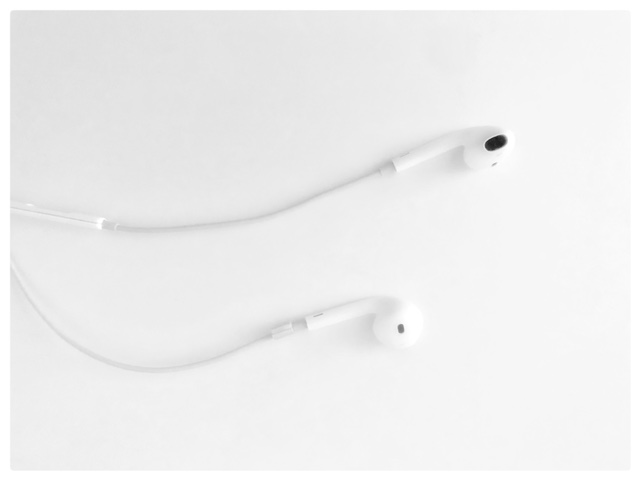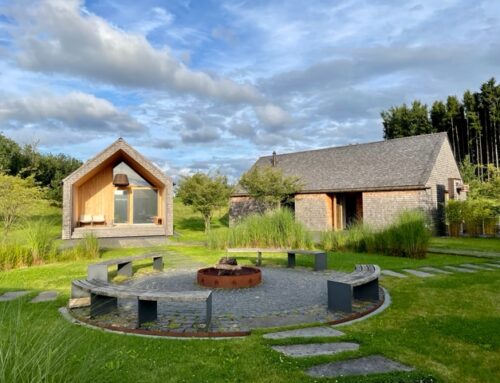Marketing of Senses in Spas: Audio Branding
Whale songs, bird’s chirping, panpipes, classical music, you name it….
We have had it all, the various music choices in spas. An important topic though, as we strive to please all the human senses in spas. We manage what our guests see (pleasing colours, calming pictures, related decoration etc.), and what our guests feel (including temperatures, the touch of a massage therapist, the feel of linen etc.). We manage their taste buds by offering refreshments, and their smell sensation by using pleasing scents for candles, oil burners, or cosmetic products.
In Spas, we manage what our guests hear (or not)
And in Spas, we also manage what our guests hear (or not hear – like disturbing noise) and how those sounds make them feel, for example relaxed.
So what does Marketing of Senses in Spas mean when it comes to sounds related to brands? Is it merely some kind of marketing that uses music as one of its strategies?
Signature dishes, signature scents…. why not signature sounds in spas?
I am delighted to present to you today an article about the topic of audio branding, by one of my former students, who has chosen the topic for his bachelor thesis. The study focus was not on Marketing of Senses in Spas, but more on the hospitality industry in general. Still many of the concepts can be transferred to a variety of industries and fields. So when reading the article, replace the word ‘hotel’ with ‘spa’ in your mind, and you will realize that everything still totally makes sense.
The following words are my student’s, not mine, basically an extract of his thesis, highlighting the most important findings. Most findings result from literature review and qualitative in depth interviews with three audio branding experts.
Enjoy the read! And please feel free to leave your comment after the article, just scroll down a little at the end.
‘Suitability and potential of AUDIO-BRANDING in the Hospitality Industry’ by Nicolas Auer
Nicolas’ thesis investigates the need and potential of audio-branding in the hospitality industry and its’ application at potential touch points of contact without neglecting the problems and challenges. He used a qualitative approach in order to gain insights in the current usage of audio-branding within the hospitality. Even though audio-branding in the hospitality industry is still at the beginning of its development, experts agree that there are advantages and benefits if used in the right way. Audio-branding is a very complex marketing tool which needs to be aligned to the company’s image and concept. Considering that, audio-branding has to be carefully implemented in order to achieve positive effects.
What is Audio Branding?
In the 1980s audio-branding seemed like a really new idea but a closer look shows that the roots of audio-branding are going back much further. A large number of examples of using music to optimize brands can be found in the past. There is a lot to be learned about how music can be used to influence people, especially, what people hear and the way they hear it. (Jackson, 2003, p.1)
The field of study of audio-branding is closely related to the field of conditioning. Audio-branding can be seen as a formation of different cognitive associations between a logo or another symbol and music or other sounds. The cognitive associations in branding includes not only perceptual clues but also the visual logo and specific meanings or attributes that are made by people when they combine these cues and generate a positive attitude. (Tan et al., 2013, S.328)
Branding with the help of Sound
Generally audio-branding can be defined as branding with the help of sound for instance with music. Customers are affected by music instantly. This is why music can be a very powerful tool for marketing. It has the ability to invoke different nostalgic memories as well as strong feelings that are related to these memories. In the last years there was a lot of technological development in the way, music and sound are used in the lives of customers. A lot of marketers have not yet adapted to this change in the use of music and sound. (Gustaffson, 2015, p.20)
“audio-branding – also known as sound branding or sonic branding describes communication through sound, using brand sound elements like an audio logo, a brand song, or a brand voice.” (Bonner/Hirt, 2009, p.11)
Application of audio Branding in Industries
There is a wide range of different industries that are using music and therefore audio-branding strategies to optimize their brand management, as the following figure shows
A look to the origin of audio-branding involves a concept that is used in a productive way in literature and is called Atmospherics. In the year 1973 Kotler described Atmospherics with what is known today as marketing of senses. Many experts explored a kind of marketing that uses music as one of its strategies. Music can be used in this way as part of the atmosphere in a store or hotel, because it highlights the experience as an important part of the overall experience that is also influenced by the light, the taste, the smell as well as the colours and textures that are used in the room.
There are different but few examples of companies that own internationally renowned brands and also use sonic branding strategies in an extensive way. As examples can be mentioned Coca-Cola, the Clarion Hotels and the SAS-Airlines. (Gustaffson, 2015, p.21)
In addition music can be described as beneficial to brands and if it is seen in this way consumers do not consciously perceive of it most of the time. This can be seen as a special ability of branding with the help of music. (Gustaffson, 2015, p.22) So the sound is virtually unnoticed but there is still an effect on people. The amount of effect is widely discussed because of its ethic background which means a possible manipulation of people on the part of brands and stores. Further it can be mentioned that audio-branding in the sense of sonic branding includes music and other sounds in the label that can be described as sound waves.
Brand Management in Hospitality Management
According to Olsen et al. (2004) the hotel industry has some of the brands that are best known in whole world, for example nearly everybody knows the name Hilton. At one time Marriott or Holiday Inn were also very prominent in the USA for many years.
To capitalize from the brand recognition that is perceived and to differentiate the brand from others it is necessary for marketing executives to employ terms as brand premium, brand equity as well as brand value and brand image.
Sound and Noise in Hospitality
Sounds in restaurants are often described as noises, but they are not necessarily negative. Most of the restaurants and hotels require a level of noise that harmonize with the concept. Nowadays there is much more sound in restaurants and hotels than in the past, because there is a trend to more noise in restaurants or hotels as well as a trend in new materials and furnishing. Choosing appropriate furnishing and materials in a hotel or restaurant as well as manipulating architectural features can control the noise in a room.
Such architectural features can be undulating or coffered ceilings or changes in the level that help to soften the sound in the room. As examples for effective sound absorbers that can be mentioned carpets, thick draperies or porous, padded seating is. Another possibility to control the level of noise can be the controlling of the sounds from the outside by avoiding exterior noise. (Cooper, 1986, pp. 229)
Music softens the atmosphere
In hotels as well as in restaurants background music is often used with the aim to soften the atmosphere in a room which means to shield people from others as well as neutralize the sounds that are made from other guests, HVAC systems, or the kitchen. Another great effect that is very important in this context is that music can also affect the behavior of customers or guests. For example the right background music can affect the bonding of the customers to the restaurant or hotel. If the aim of the owner of a restaurant or hotel is to increase the levels of expenditure on food as well as drinks it is recommended to play the background music in low volume. (Sullivan, 2002, pp.325)
Classical Music increases Sales
Regarding background classical music it can be said that this kind of music prepares people to spend not only more but also higher money. For this fact North, Shilock & Hargreaves (2003) identified three possible explanations. First classical music can be seen as synergistic with other different aspects of the atmosphere in the hotel restaurant and so it promotes spending. Further this kind of music is preferred by the participants.
The last explanation of the authors said that maybe with the help of classical music an upscale atmosphere can be promoted which is lending itself to increase the intentions of purchasing. (North, Shilock & Hargreaves, 2003, pp.273)
Gustaffson et al. (2006) could show in their study that music possibly has a significant effect, not only on the duration of the meal but also of the expenditure. There were four conditions that related volume, tempo and style as well as the absence of music used in the study period the music was loud or soft, fast or slow, popular or unpopular. Regarding the expenditure of drink and food, it varies in a significant way.
Further it can be shown that music only has the effects as mentioned above, if it fits the style of the restaurant. In the opposite way, if the music does not fit the style of the restaurant, it’s possible that music degrades the whole experience. (Gustaffson et al., 2006, pp.89)
Conclusion
Audio-branding can be a great marketing tool if implemented in the best way possible.
Not only in the hospitality industry but in every market branch where there is communication between customers and companies in terms of services or products.
Positive Effects
Several studies describe the positive effects of audio-branding in restaurants or hotels. To get the optimum out of audio-branding, which is a very expensive branding tool, it is essential that the chosen music fits the atmosphere in the hotel or restaurant. If there are different areas in a hotel or restaurant it is inevitable to adjust the music that is played in the background. At this point it is important to mention that audio-branding is so much more than simple background music, because through audio-branding it is possible to make people recognise a particular brand out of a set of brands by competition.
An analysis of important literature regarding the topic of audio-branding shows that people stay much longer in a restaurant if the music in the background fits not only the expectation of the customer but also the atmosphere that should be built. Because of this it is necessary to play different sounds in different areas in hotels or restaurants for example the check in area and the wellness area. When people remain for a longer time they consume more which is one target of audio-branding, yielding a sales increase.
A powerful Tool
Regarding the question if audio-branding is a powerful tool to implement a brand the Interviewees agreed that there are lots of positive effects in using audio-branding for a restaurant or hotel because it influences the customers in an unconscious way. They also agreed that music is a very important part of communication therefore it is necessary to use it to get in contact with the consumers.
But audio-branding is not only a powerful tool to implement a brand it is also very expensive to create the right playlist for a special hotel or restaurant. The size of the company that wants to use audio-branding as a tool does not affect the possibilities of audio-branding but it is necessary to pay attention to it because there is a difference in the target of the company regarding audio-branding. Big companies with branch offices in different countries need people to recognize the brand in every country while small firms want their customers to come again to the same destination.
According to the measurability of the effect of audio-branding all three Interviewees pointed out that this is very hard to do because there are so many factors that play together in implementing a brand doing marketing for restaurant or hotel businesses. Interviewee 1 mentioned that it is possible to measure the effectiveness of audio-branding with the help of the perception of the customers about the restaurant or hotel while Interviewee 2 mentioned the possibility in measuring the consequences of audio-branding with the help of measuring the sales. Interviewee 3 doesn’t give a detailed possibility in this case.
Still at the beginning
The special case of audio-branding in the hospitality industry makes the experts think of it in a very different way, but they all agree that audio-branding is still in the beginning of its development and there could be done much more with sounds and music used as audio-branding.
While Interviewee 2 pointed out that it is possible to compare hotels and restaurants with other industries depending audio-branding, Interviewee 3 is more skeptical at this point. He mentioned that audio-branding can be used in every field where a company like a hotel or restaurant communicate with people, but it is not possible to build consumers loyalty only through audio-branding, because there is a great amount of other factors for example the quality of the service product that is responsible if customers visit a hotel or restaurant again or not.
According the process of implementing audio-branding in hospitality industry all three Interviewees agreed that an analysis of the hotel or restaurant is the most important factor to start with. Without this it is not possible to create an audio-branding strategy that fits the other factors of the atmosphere in a restaurant or hotel. It is important to point out that only if the audio-branding strategy fits the other factors in the restaurant or hotel it is possible to get advantages out of it.
Furthermore expectations and wishes of the consumers must be analyzed carefully in order to fulfill them. Another important fact, mentioned by Interviewee 2, is the amount of flexibility in the music that is used in the audio-branding. Over time there can be changes in the restaurant and audio-branding should be adapted to this changes in order to keep its effectiveness.
Different playlists for different Areas
It could be showed with the help of the interviews that there are a lot of touch points within the hotel industry. There should be different playlists for different areas in a hotel or restaurant. It’s absolutely necessary to have a feeling for the product or the atmosphere in which the sound should be played. Interviewee 2 again is very sceptical about audio-branding in the hospitality industry because in his opinion there are much more important factors for people to remain than only the music.
Regarding the question if audio-branding can contribute to customer loyalty it was pointed out by the Interviewees that music is received in an unconscious way but it can help to recognize special brand and if the unconscious feeling is a positive one, consumers will come again to the hotel or restaurant.
It’s important to mention that all three Interviewees don’t have very much experience with implementing audio-branding in a hotel or restaurant. They point out that most of the time sounds in restaurants are only background music that should support the atmosphere in the restaurant, but there’s not a real professional strategy. There should be much more enlightened work regarding audio-branding.
Increase Sales with Music
Another important topic of the interviews was the sales increase that is possible with the help of audio-branding. It could be found out with the help of the experts that it is possible to motivate people to remain longer in the restaurant if they feel good and like the atmosphere around them. Because of that, they order more drinks and food which leads automatically to an increase of consumption. Moreover it can also contribute to increase returning customers.
Interviewee 1 and Interviewee 2 agreed that if the music doesn’t fit the atmosphere around the consumers or if the same sound is played over and over, sensory overload can occur. This negative experience can lead to brand damage. Interviewee 3 had a different opinion because music in the background is played with a low volume and therefore it is not possible to get a sensory overload.
The location of the company that wants to use audio-branding is important because, as mentioned by Interviewee 2, music is an international language and therefore it is different in varying countries. So it is necessary to adapt the sounds to the country as well as the customers. Interviewee 1 and Interviewee 3 pointed out that it is necessary that audio-branding is a combination of destination and the reflection personality and the values of the brand.
Marketing of Senses has potential
Generally it can be said that audio-branding is still a topic that is not as recognized as it should be because of its potential. If a restaurant or hotel can deal with the challenges of audio-branding and if there are resources for audio branding management, audio-branding can be a great tool for raising brand awareness.
References: Arnould, E., & Thompson, C. J. (2005). Consumer Culture Theory (CCT): Twenty years of research. Journal of Consumer Research, pp. 868–882.
Bronner, K.& Hirt, R. (eds.) (2009) Audio-branding:Brands, Sound and Communication. Baden-Baden, Germany: Nomos.
Caldwell, C., & Hibbert, S. A. (2002). The influence of music tempo and musical preference on restaurant patrons’ behavior. Psychology and Marketing, 19(11), 895–917.
Cooper, J. (1986). Controlling restaurant noise. Interior Design, 232–234.
Eilers, D. (2014). Wirkung von Social Media auf Marken: Eine ganzheitliche Abbildung der Markenführung in Social Media: Springer Fachmedien Wiesbaden.
Foxall, G. R., Goldsmith, R. E., & Brown, S. (1998). Consumer psychology for marketing (2. ed.). London: Internat. Thomson Business Press.
Gobé, M. (2002). Citizen brand: 10 commandments for transforming brands in a consumer democracy. New York: Allworth Press.
Gobé, M. (2009). Emotional branding: The new paradigm for connecting brands to people (Updated and rev. ed.). New York, NY: Allworth Press.
Gustafsson, C. (2015). Sonic branding: A consumer-oriented literature review. Journal of Brand Management, 22(1), 20–37.
Gustafsson, I.-B., Ostrom, A., Johansson, J., & Mossberg, L. (2006). The Five Aspects Meal Model: A tool for developing meal services in restaurants. Journal of Foodservice, 17(2), 84–93.
Hammond, J. (2008). Branding Your Business: Promote Your Business, Attract Customers and Build Your Brand Through the Power of Emotion. Business Success. London: Kogan Page.
Hung, K., Rice, M. (1992). The development and testing of a typology of musical elements in television commercials, Athen.
Jackson, D. (2003). Sonic Branding: An Essential Guide to the Art and Science of Sonic Branding: Palgrave Macmillan UK.
Kapferer, J. N. (1994). Strategic Brand Management: New Approaches to Creating and Evaluating Brand Equity: Free Press.
Keller, K. (2000). The Brand Report Card. Harvard Business Review
Kilian, K. (2009) From brand identity to audio-branding. In: H. Bronner and H. Rainer (eds.) Audio-branding: Brands, Sound and Communication. pp. 35–48, Baden-Baden, Germany: Nomos.
Lindstrøm, M. (2005). Brand sense: How to build powerful brands through touch, taste, smell, sight and sound. London: Kogan Page.
Minsky, L., Fahey, C., & Kotler, P. (2017). Audio-branding: Using Sound to Build Your Brand: Kogan Page.
Nitschke, A., & Burmann, P.D.C. (2007). Event-Marken-Fit und Kommunikationswirkung: Eine Längsschnittbetrachtung am Beispiel der Sponsoren der FIFA-Fußballweltmeisterschaft 2006TM: Deutscher Universitätsverlag.
North, A. C., Hargreaves, D. J., & McKendrick, J. (1999). The influence of in-store music on wine selections. Journal of Applied Psychology, 84(2), 271–276.
North, A. C., McKendrick, J., & Hargreaves, D. J. (1996). The Effects of Music on Responses of a Dining Area. Journal of Environment Psychology, 55-64.
Olsen, M. D., Chung, Y., Graf, N., Lee, K., & Madanoglu, M. (2004). Branding: Myth and reality in the hotel industry. Journal of Retail & Leisure Property, 4(2), 146–162.
Solomon, M. R. (2013). Consumer behavior: Buying, having, and being (Tenth Edition). Boston, [Hoboken], New York, London, Singapore: Pearson.
Strähle, J. (2017). Fashion & Music: Springer Singapore.
Straka, M. (2007). Audio-Branding Im Aktuellen Kontext Der Marken-Kommunikation: Bod Third Party Titles.
Sullivan, M. (2002). The impact of pitch, volume and tempo on the atmospheric effects of music. International Journal of Retail & Distribution Management, 30(6), 323–330.
Tan, S. L., Cohen, A. J., Lipscomb, S. D., & Kendall, R. A. (2013). The Psychology of Music in Multimedia: OUP Oxford.
Thompson, C. J., Rindfleisch, A., & Arsel, Z. (2006). Emotional branding and the strategic value of the doppelgänger brand image. Journal of marketing, 70(1), 50–64.
Tom, G. (1990) Marketing with music.. The Journal of Consumer Marketing7(2): 49–53
van Dijck, J. (2006) Record and hold: Popular music between personal and collective memory. Critical Studies in Media Communication 23(5): 357 – 374.











